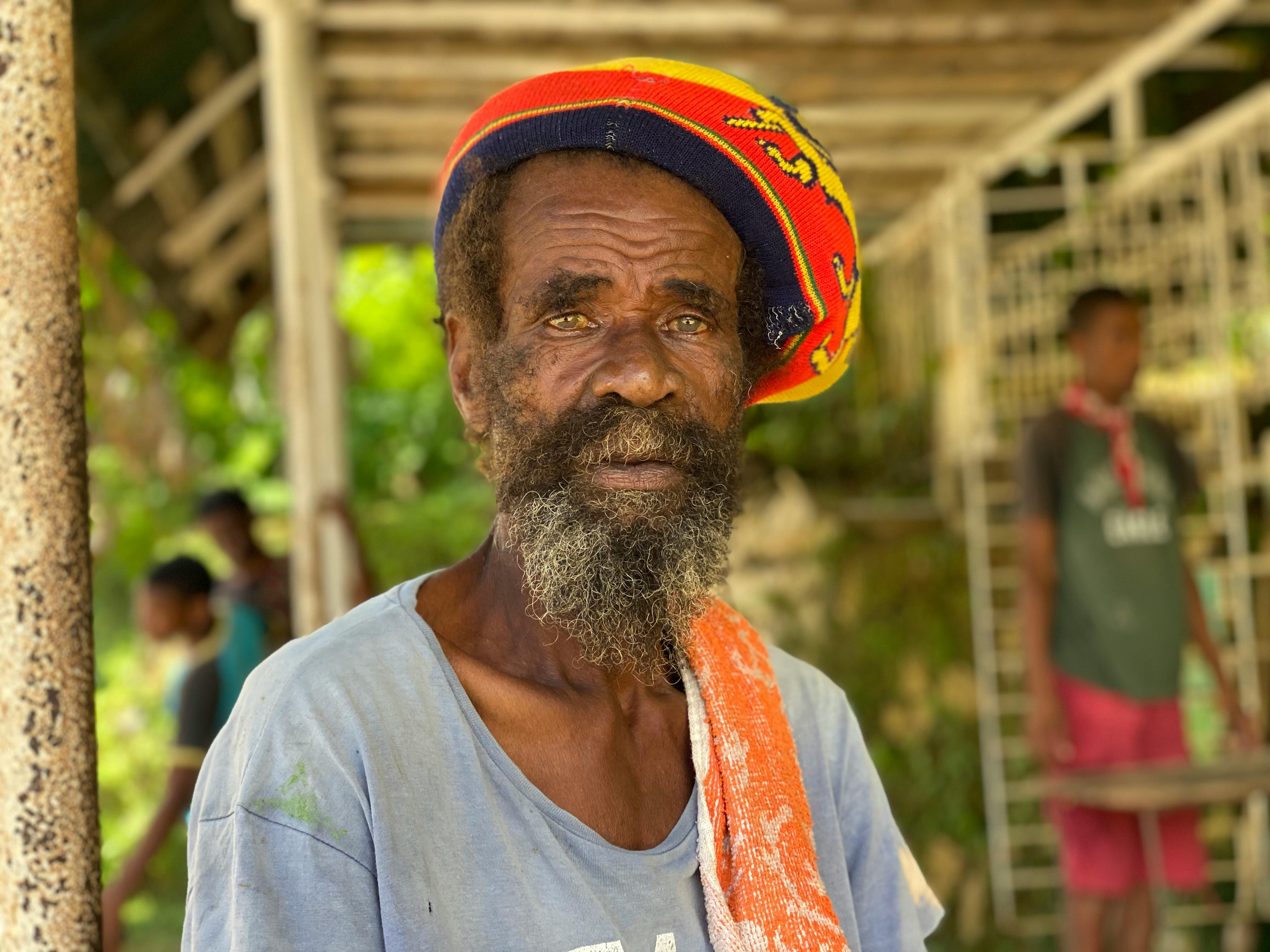Jamaica’s Unsung Heroes: Guide to Lesser-Known Figures & Their Legacy
Ever noticed how most history classes—or travel guides—about Jamaica tend to circle the same names over and over? Bob Marley. Marcus Garvey. Perhaps Queen Nanny if you’re really lucky. In my experience, bringing up names like Mary Seacole or Alexander Bedward in conversation sparks blank looks, even among passionate Caribbean lovers. I get it: mainstream culture, both within and outside Jamaica, often reduces a vibrant nation to reggae, beaches, and the same two or three “big” freedom fighters. But honestly, there’s an entire universe of Jamaican history—hidden, complex, profoundly human—winking at us beneath the surface. This is where I get excited, because exploring these unsung heroes changes how we see the island, and maybe ourselves, forever.
Why Jamaica’s Unsung Historical Figures Matter
Let’s set the scene for a moment. Imagine your perception of Jamaica is shaped by mainstream documentaries, a Bob Marley mural, and a faint sense that “liberation” and “rebellion” define the island’s past. That’s, well, kind of true. But also wildly incomplete. What I’ve learned, poring over lesser-known histories and traveling the backroads of Saint Elizabeth and Portland, is this: Jamaica’s story is a multi-layered epic written by hundreds of hands. It’s a patchwork of tenacity, intellect, artistic genius, and bravery that rarely fits into neat boxes. Each time I uncover a new figure, it’s like meeting a character I didn’t know I needed. Their struggles—and sometimes their flaws—force me to reconsider the heroic narrative altogether.
If you only know Jamaica through its “greatest hits,” you’re missing 80% of the country’s lived experience. The untold stories—which often have no statues or reggae anthems—reveal the full complexity of the Caribbean’s fight for dignity, creativity, and justice.1
Jamaica was the first Caribbean nation to gain independence from Britain in 1962, but its path to nationhood was shaped by many more than just its most famous leaders. Unknown to most, at least 500 officially recorded acts of rebellion occurred during slavery, several led by “ordinary” men and women whose stories have nearly vanished.2
Decoding the Gaps: Why They’re Overlooked
Let me step back: How does a figure—say, Gladys Longbridge or Alexander Bedward—fall through the cracks of Jamaica’s official memory? I’ve pondered this question for years, first as a curious reader, then as a slightly obsessed researcher. Honestly, the reasons are tangled:
- Records lost or never maintained (especially for women, rural, or non-English-speaking activists)
- Political risks—some leaders threatened British control so effectively they were erased by colonial authorities3
- Social stigma: leaders who didn’t fit “respectable” narratives or had controversial private lives
- National identity construction: The story of nationhood often needs “simple heroes,” so it gets streamlined
But what really strikes me: sometimes, we—Jamaicans at home or abroad—just didn’t get the chance to hear these stories told well. And that, to me, is something we can actually change. Every time I share Mary Seacole’s adventures in Crimea or George Stiebel’s improbable rise from enslaved child to Jamaica’s first Black millionaire, I see people light up. It’s contagious.
“We have to unlearn the histories that leave us half-made. Every islander who ever acted with courage deserves a place in our imagination.”
Six Remarkable Yet Overlooked Jamaican Heroes
Before I go further, here’s a quick peek at the cast of characters we’ll meet—a mix of rebels, thinkers, healers, visionaries, and everyday resisters whose lives still send ripples across Jamaica’s landscape:
- Mary Seacole: Nurse, entrepreneur, and humanitarian whose medical courage changed the course of war and racial prejudices4.
- George Stiebel: Former enslaved person turned millionaire philanthropist, builder of Devon House.
- Alexander Bedward: Charismatic preacher, “Jamaican John the Baptist,” and social agitator.5
- Gladys Longbridge: Pioneering political thinker and education reformer.
- Samuel Sharpe: Architect of the 1831 Christmas Rebellion (not as celebrated as Nanny or Garvey, yet his influence on emancipation was massive).
- Rita Marley: Not just Bob’s wife—her independent activism in women’s rights and music production stands as legacy on its own.6
I’ll be honest: narrowing this list was nearly impossible. There are dozens more I could have included (Ever heard of Amy Bailey? What about Violet Lindo or Cyclops “Jack Mansong”?). For now, let’s step, one by one, into the lives of those who quietly made Jamaican history—sometimes at immense personal cost.
Mary Seacole: The Healing Rebel
Quick confession—when I first heard about Mary Seacole, I thought, “Just another Jamaican minor footnote.” Wrong. Seacole’s story is a seismic shock to the sanitized history of British war medicine. Born in 1805 to a free Jamaican mother and a Scottish army officer, Seacole learned herbal remedies in Kingston before facing the racial prejudice of Victorian England. Here’s what blows me away: When Florence Nightingale’s nurse corps turned her down for being “too brown,” Seacole sailed herself to Crimea—at her own expense—set up a field hospital, and saved lives with her Jamaican remedies. In 2004, she was voted the “greatest Black Briton,” beating out a field of UK-born icons.7
I used to think “heroism” was a public thing—statues, medals, national holidays. Seacole redefines it. She faced ridicule, loss of fortune, and erasure for her kindness. In 21st-century Britain, she’s finally getting a statue. Yet in Jamaica, her medical legacy is still largely hidden outside a few classrooms and a fading Kingston plaque.8
George Stiebel: From Bondage to Millionaire
Let’s pivot to George Stiebel. I ran into his story almost by accident, during a tour of Devon House—a mansion famous for ice cream and heritage tours. What most visitors don’t realize: Stiebel was Jamaica’s first Black millionaire. Born to a German-Jewish merchant and an enslaved woman, Stiebel navigated post-Emancipation Jamaica with unorthodox brilliance. Shipping, mining in Venezuela, and shrewd property investments built his fortune against all odds. But what really impresses me: he reinvested in Jamaican society’s future—funding schools, churches, and charities.9
Devon House, Stiebel’s iconic residence, was named a National Monument in 1990 but remains one of the few tangible sites linked to Jamaica’s early Black gentry. Most visitors sample the sweets without realizing the island’s “Gatsby” was once considered unfit for colonial high society.10
I have to admit—there’s something galvanizing about seeing Stiebel’s understated portrait in the Devon House foyer. Wealth didn’t shield him from discrimination; in fact, colonial authorities often sought to undermine his rise. Yet Stiebel persisted, a testament to the determined, complicated social mobility of post-slavery Jamaica.
Alexander Bedward: The Visionary Preacher
Talk about polarizing. Alexander Bedward, often called the “Jamaican John the Baptist,” led the Bedwardite movement from August Town at the turn of the 20th century. I first heard about Bedward from a street vendor arguing (loudly) about his mysterious “ascension”—I had to go digging. What I found was riveting: Bedward, born in 1859, fused Pentecostal fire with social commentary. His sermons drew thousands (no exaggeration), and his “healing rivers” became a symbol for personal and collective regeneration. However, British officials saw in Bedward a dangerous agitator capable of inciting unrest.11
“Bedward’s reach and endurance make him a pivotal but misunderstood figure in our religious and political imagination.”
The more I read, honestly, the more I saw Bedward as an early forerunner to Garveyism and Rastafari. His downfall—a tragic mix of internal dissent, failed “ascension,” and British paranoia—led to his committal in an asylum. But here’s the kicker: remnants of his philosophy still echo in modern revivalism and reggae lyrics. In a country searching for hope, Bedward’s vision endures in strange, stubborn ways.
What does it mean that Jamaica’s most disruptive dreamers—Bedward among them—are more likely to end up in metaphorical (or literal) exile than on a pedestal? I go back and forth on this: national identity is, for better or worse, shaped by who we choose to remember.12
Gladys Longbridge: The Teacher Who Built a Nation
If there’s a name you ought to know from the early decades of independence, it’s Gladys Longbridge. Most never hear it. Born in 1916, Longbridge forged a path in a doubly difficult terrain—for women and for anyone advocating children’s rights under colonial rule. She joined the People’s National Party and quietly rewrote policy after policy, advancing literacy for rural youths. Her 1949 blueprint for national teacher training transformed what it meant to “build Jamaica”—from the ground up, one classroom at a time.13
Students, teachers, and even politicians owe her a debt. This is not hyperbole—without Longbridge and her cohort of determined educators, Jamaica’s postwar leap in literacy wouldn’t exist. Yet, she remains largely an academic footnote. Frankly, this frustrates me. We put so much prize on flash and drama in history, when the slow work of nation-building is exactly what shapes lives most.
- Instituted compulsory teacher training by 1952
- Developed “reading clinics” for rural children—a model later adopted regionally14
- Advocated for girls’ education and health workshops, decades before global development agencies caught on
When I spoke with a retired principal in Trelawny for a 2023 oral history, she told me: “Miss Longbridge gave us the mind to dream, then taught us how to prove we belonged.” It’s a legacy you feel not in statues, but in stories passed from teacher to student.

Samuel Sharpe: The Spark Behind Emancipation
Sharpe is now recognized as a National Hero, but if you ask most Jamaicans (let alone visitors) to name the architect of the 1831 Christmas Rebellion, you’ll get more silence than certainty. In my early fieldwork, I was shocked: his rebellion forced the British Parliament to seriously consider abolition, decades before the U.S. Civil War. Born in St. James parish—barely literate but gifted orator—Sharpe organized a mass, coordinated strike of enslaved workers. It began as non-violent protest but, after violent reprisals, exploded into Jamaica’s largest anti-slavery uprising. Roughly speaking, this rebellion triggered a panic in London’s government, hastening legislative steps toward freedom.15
Why is Sharpe less a household name than Nanny or Garvey? I suspect it’s partly timing—emancipation movements often lift leaders to myth only after their styles become acceptable. Sharpe’s stubborn, quietly radical faith wasn’t “marketable” until Jamaica needed National Heroes for Independence.16
I’ll be honest: Sharpe’s spirituality (he was a Baptist deacon) is what stands out for me. The courage to reimagine Christianity as a vehicle for social change—not passive acceptance—lays the foundation for Jamaica’s tradition of liberation theology, from Bedward to today’s community pastors.
Rita Marley: The Revolution Beyond Reggae
This is where my personal perspective collides with mass media narratives: Rita Marley, forever cast as “Bob’s widow,” is a hero all her own. Childhood poverty in Cuba and Trench Town, fierce musical vision, activist drive—Rita co-founded the I Threes (pioneering all-women reggae harmony), managed Bob Marley’s estate after his death, and funneled her resources into the Rita Marley Foundation, focused on literacy and healthcare for African and Caribbean children.17
During my 2019 trip to Kingston, I toured the Marley Museum. What stood out wasn’t the awards but Rita’s handwritten notes: business plans, lyrics, and field-trip sketches for girls’ schools. She is proof that hidden labor, managerial acumen, and uncelebrated activism often mean just as much as headline shows or iconic album covers.
Rita Marley’s outreach, both financial and organizational, led to her being awarded “Order of Distinction” by the Jamaican government in 1996—but she remains less covered internationally than even minor male reggae artists.
“Rita didn’t just support reggae—she redefined what leadership meant for Black Caribbean women, on and off stage.”
I go back and forth, but I’m convinced: Marley’s vision for women’s equality in music and education is one of the most potent but undervalued forces in recent Caribbean history.
Their Lasting Legacy: What Changed, What’s Left
If we’re being totally honest—does learning these stories change how we think about Jamaica at all? I’ll be completely candid: it changed everything for me. Before, Jamaica was vibrant but… predictable. Now, when I walk past a Kingston mural or rural roadside gravestone, I wonder: what narratives slept here unremembered? Which risks paid off, and who was quietly erased?
| Name | Major Contribution | Estimated Impact | Legacy Seen Today |
|---|---|---|---|
| Mary Seacole | War nursing, cross-cultural medicine | Thousands treated; global shift in medical integration | UK memorials, health equity debates |
| George Stiebel | Economic mobility, philanthropy | First Black millionaire; endowments still supporting schools | Devon House, educational trust funds |
| Alexander Bedward | Religious and social activism | Inspired 50,000+ followers; early anti-colonial voice | Rastafari, grassroots church movements |
| Gladys Longbridge | Literacy, teacher training | Literacy rates grew from 45% to 78% (1950–1975) | National Teacher’s Colleges, reading clinics |
| Samuel Sharpe | Emancipation activism | Triggered the end of slavery for 300,000+ Jamaicans | Sharpe Square, Emancipation Day ceremonies |
| Rita Marley | Women’s leadership, cultural advocacy | Education/literacy for 10,000+ children | Women in reggae, Marley Foundation |
I used to think historical impact meant statues and currency portraits. Now I realize: legacy really lives in changed lives, in music, rituals, and daily community work rippling out for generations.
Let that sink in for a moment: six names, all overlooked, yet their achievements underpin much of the Jamaica we love today. Are we ready to tell their stories in full?
How to Discover Their Stories in Jamaica
Here’s the thing, though: none of this history matters if it remains locked up in thick textbooks or rare museum displays. I remember my first real “aha”—standing outside a neglected church in St. Andrew, realizing Bedward’s sermons echoed here every Sunday. History isn’t static; it’s everywhere, waiting for someone to notice. If you’re ready to dig in, these approaches really help:
- Walk Historical Routes: Try the historic walk from Spanish Town to Kingston, tracing footsteps of both rebels and philanthropists.
- Visit Less-Famous Sites: Devon House is more than dessert—seek out their “hidden histories” tour focused on George Stiebel.
- Attend Community Lectures: Check out UWI’s community forums or church talks—local historians often speak on figures like Longbridge and Sharpe.18
- Read Oral Histories: Libraries and community groups hold oral history events that animate the stories the textbooks miss.
What tipped the scales for me was hearing people in their 80s debate—in a rural post office—who deserved more credit for building local schools. Turns out, the best places to hear about Jamaica’s unsung heroes are still neighborhood gatherings, churches, or market stalls. Academic papers matter, but so do lived memories shared over jerk chicken at sunset.
If you’ve ever marveled at Jamaica’s music, art, or landscape and wondered how it got so layered, ask about the names you don’t already know. I guarantee—once you start looking, you’ll never travel (or think about Jamaica) the same way again.
Conclusion: Reclaiming the Invisible Legacy
On second thought, let’s rethink what “legacy” really means. It’s easy—maybe even comforting—to stick with the narratives handed down to us. But real progress happens, I believe, when we seek out the people who were never meant to be remembered. If you’re reading this, I challenge you: tell someone about Rita Marley’s activism, mention Alexander Bedward the next time a preacher’s legacy comes up, or give Gladys Longbridge her due credit the next time you talk about education. That’s how history circles back, incomplete but still vital, still very much in motion.
So, which unsung hero will you bring up in conversation first?
Dig deeper into Jamaica’s history wherever you go. Challenge the stories you’ve been told—and make room for those whose voices remain, even when their names have faded. This is the only way to honor the struggle, creativity, and courage that truly built Jamaica.
References



